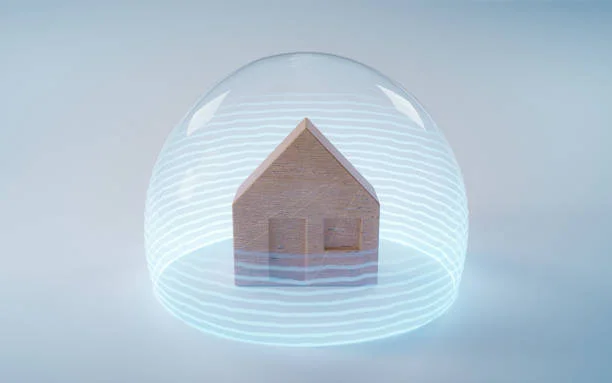Most homeowners never think twice about their crawlspace—until they notice musty odors, sagging floors, or escalating energy bills. While the crawlspace is out of sight, it should never be out of mind. Peabody Residential, known for reliable Hillsborough landlord support services, often recommends crawlspace encapsulation to prevent moisture, mold, pests, and air-quality issues.
Encapsulation involves sealing your crawlspace from external elements using specialized materials like vapor barriers, insulation, and dehumidifiers. It transforms a damp, mold-prone area into a clean, dry, and controlled environment. Whether you’re planning to sell your home, improve indoor air quality, or protect your investment long-term, this often-overlooked upgrade could be the smartest decision you make for your property.
In this comprehensive guide, we’ll explore what crawlspace encapsulation is, why it matters, how it’s done, and why turning to foundation repair experts for proper installation makes all the difference.
What Is Crawlspace Encapsulation?
Crawlspace encapsulation is the process of completely sealing off your home’s crawlspace from external air, moisture, and pests. The goal is to create a controlled environment beneath your home, one that stays dry year-round and supports the structural integrity and comfort of your living space above.
Key components of encapsulation typically include:
- Heavy-duty vapor barrier (usually 6-20 mil polyethylene sheeting) installed across the floor and walls
- Sealing of vents and other entry points for outside air
- Insulation of walls or subflooring to improve energy efficiency
- Dehumidifier installation to regulate moisture levels
- Drainage systems like French drains or sump pumps to prevent standing water
The result is a sealed, insulated, and dry crawlspace that supports better air quality and energy performance throughout the home.
Why Crawlspace Conditions Matter
Many homeowners don’t realize that up to 50% of the air in your home comes from the crawlspace. If your crawlspace is wet, moldy, or infested with insects or rodents, those problems can—and often do—make their way into your living areas.
Here’s what an unsealed or neglected crawlspace can lead to:
- High humidity levels inside the home
- Mold and mildew growth
- Structural wood rot
- Increased energy costs
- Pest infestations
- Unpleasant odors
- Sagging floors
- Allergy and respiratory issues
Many of these issues are subtle at first but compound over time, leading to expensive repairs. Encapsulation addresses the root cause rather than just masking the symptoms.
Signs Your Crawlspace Needs Encapsulation
You don’t need to crawl around with a flashlight to know there’s a problem underneath your home. Some signs are obvious, others more subtle. Look for:
- Musty or damp smells in your home
- Cold or uneven floors above the crawlspace
- High energy bills, especially in summer or winter
- Visible mold or mildew in HVAC ductwork
- Condensation or standing water in the crawlspace
- Insect or rodent activity
- Soft or rotting wood in crawlspace framing
These are all indicators that moisture is present and causing harm to the structural and environmental quality of your home.
Benefits of Crawlspace Encapsulation
1. Improved Indoor Air Quality
Since air rises from the crawlspace into the home, sealing the area below dramatically reduces airborne allergens, mold spores, and musty odors. This can be especially beneficial for people with asthma, allergies, or immune sensitivities.
2. Enhanced Structural Integrity
Moisture leads to wood rot, rust, and shifting soil conditions that can compromise your home’s foundation. Encapsulation keeps these destructive forces at bay by eliminating the source—moisture.
3. Lower Energy Bills
A sealed crawlspace prevents hot humid air (in summer) or cold air (in winter) from infiltrating your home, making HVAC systems more efficient. This results in noticeable reductions in heating and cooling costs year-round.
4. Increased Home Value
A clean, dry crawlspace is a huge selling point for homebuyers. It shows the home has been well maintained and is structurally sound—both of which boost resale value.
5. Pest Prevention
Moisture and access points in open crawlspaces attract pests like termites, rodents, ants, and spiders. Encapsulation seals these access points and creates a dry environment inhospitable to pests.
6. Mold and Mildew Control
Mold thrives in dark, damp areas—making crawlspaces an ideal habitat. By removing moisture, encapsulation removes mold’s ability to grow and spread into your home.
Expand your knowledge with this handpicked companion read.
What the Encapsulation Process Involves
Professional crawlspace encapsulation involves several crucial steps:
1. Inspection and Assessment
Experts inspect the crawlspace to identify current damage, moisture levels, mold, pest issues, and any structural concerns. Recommendations are made based on the specific condition of your space.
2. Cleaning and Preparation
The crawlspace is cleaned of debris, old insulation, mold-contaminated materials, and pests. Mold remediation may be performed if necessary.
3. Drainage Installation
To prevent future standing water, systems like French drains or sump pumps may be installed. This is essential for homes with high groundwater levels.
4. Vapor Barrier Installation
Thick polyethylene sheets are applied to the floor and walls, sealed at seams, and anchored in place. This barrier prevents ground moisture and gases like radon from entering the home.
5. Vent and Gap Sealing
Foundation vents, pipe penetrations, and other openings are sealed to prevent outside air and pests from entering.
6. Insulation and Dehumidification
Depending on climate, insulation is added to crawlspace walls or subflooring. A dehumidifier is often installed to regulate moisture and ensure long-term dryness.
Working with foundation repair experts ensures each step is done to code and according to industry best practices—especially when structural reinforcements or drainage work is needed.
Crawlspace Encapsulation vs. Traditional Venting
Many older homes have vented crawlspaces, based on outdated thinking that vents help control moisture. In reality, vents often do the opposite.
In humid climates, vents allow warm, moist air to enter the cool crawlspace. The result? Condensation, which accelerates mold growth and structural decay.
Encapsulation eliminates the venting issue by sealing the space, insulating it, and controlling internal humidity. It’s a superior solution that reflects modern building science and has been embraced by leading foundation repair experts for long-term moisture control.
Common Myths About Crawlspace Encapsulation
“It’s too expensive”
While the upfront cost can be several thousand dollars, it prevents tens of thousands in damage. It also saves energy costs monthly.
“My crawlspace has never had water issues”
Even if there’s no standing water, elevated humidity levels can still rot wood and grow mold.
“I can DIY it with a tarp”
True encapsulation requires professional-grade vapor barriers, mechanical systems, and sealing. A thin sheet of plastic won’t last or protect adequately.
“It’s only for homes with basements”
Crawlspace encapsulation is specifically for homes without basements, and it’s even more crucial because these homes often sit closer to groundwater.
How Much Does Crawlspace Encapsulation Cost?
The cost of encapsulation depends on several factors:
- Size of the crawlspace
- Existing damage or repairs needed
- Type of vapor barrier and insulation used
- Drainage or dehumidifier installation
- Labor and accessibility
On average, homeowners can expect to pay $5,000–$15,000 for complete encapsulation. It may seem like a major expense, but when compared to mold remediation, structural repairs, pest extermination, and energy waste, the value is clear.
Why Work with Foundation Repair Experts?
While some contractors offer basic moisture barriers, foundation repair experts are uniquely qualified to handle crawlspace encapsulation. Why?
- They understand how crawlspace issues affect the entire foundation.
- They’re trained in proper drainage and moisture management techniques.
- They can identify and correct structural issues before they escalate.
- They ensure code compliance and long-term durability.
- They often offer warranties that protect your investment.
Encapsulation isn’t just about sealing—it’s about creating a system that protects your home from the ground up. That’s why it’s crucial to trust those who specialize in that very foundation.
Final Thoughts
Crawlspace encapsulation in Ottawa is one of the most impactful upgrades you can make to protect your home’s structure, energy efficiency, air quality, and resale value. What lies beneath your floorboards may not be visible every day, but it plays a vital role in your family’s comfort and safety.
Whether you’re noticing musty smells or simply planning proactive maintenance, encapsulation offers a long-term, science-backed solution to a wide range of common homeowner problems. It turns a once-problematic space into an asset, transforming your home from the ground up.
If you’re unsure where to start, reach out to foundation repair experts who can inspect your crawlspace and recommend a tailored solution that fits your home, climate, and budget.
Ready for a deeper dive? Our most popular pieces live at Management Works Media.






